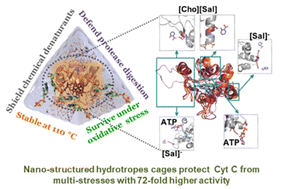DK, Surpeta B, Brezovsky J, 2024: Incorporating prior knowledge in the seeds of adaptive sampling molecular dynamics simulations of ligand transport in enzymes with buried active sites. Journal of Chemical Theory and Computation, DOI: 10.1021/acs.jctc.4c00452. full text dataset

Because most proteins have buried active sites, protein tunnels or channels play a crucial role in the transport of small molecules into buried cavities for enzymatic catalysis. Tunnels can critically modulate the biological process of protein–ligand recognition. Various molecular dynamics methods have been developed for exploring and exploiting the protein–ligand conformational space to extract high-resolution details of the binding processes, a recent example being energetically unbiased high-throughput adaptive sampling simulations. The current study systematically contrasted the role of integrating prior knowledge while generating useful initial protein–ligand configurations, called seeds, for these simulations. Using a nontrivial system of a haloalkane dehalogenase mutant with multiple transport tunnels leading to a deeply buried active site, simulations were employed to derive kinetic models describing the process of association and dissociation of the substrate molecule. The most knowledge-based seed generation enabled high-throughput simulations that could more consistently capture the entire transport process, explore the complex network of transport tunnels, and predict equilibrium dissociation constants, koff/kon, on the same order of magnitude as experimental measurements. Overall, the infusion of more knowledge into the initial seeds of adaptive sampling simulations could render analyses of transport mechanisms in enzymes more consistent even for very complex biomolecular systems, thereby promoting drug development efforts and the rational design of enzymes with buried active sites.




